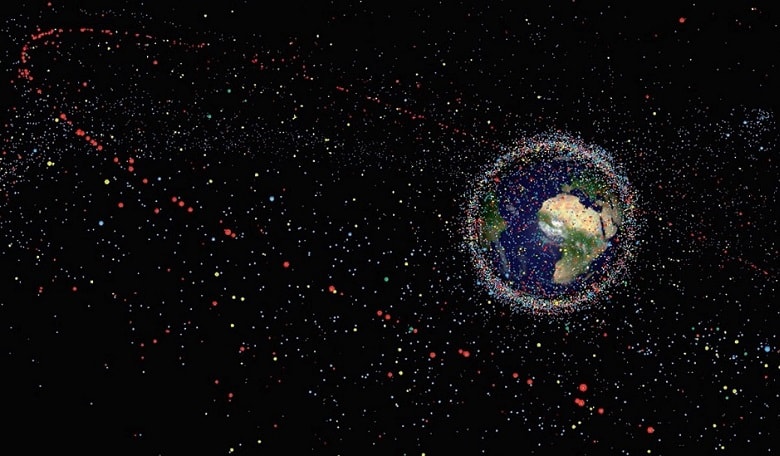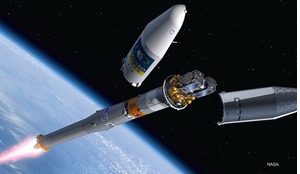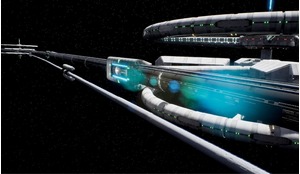Our perception of the Earth and understanding of our place in the universe dramatically changed after the Soviet Union launched Sputnik, the first artificial Earth satellite, on 4 October 1957. That technological success paved the way for first military, then civil, then commercial, competition and co-operation that continues today.
The increasing utility of space-derived information enabling us to look outward and better understand our own solar system and our place in the universe, or to look inward and increasingly assist in our knowledge of the Earth, has transformed our lives and enabled globalisation. Corporations, national governments, international agencies and individual citizens now consistently rely on spacecraft-supported communication, navigation and timing, imagery, and remote sensing information capabilities to conduct daily business. Space transportation initiatives have taken hold. Space is no longer the domain of an extended superpower struggle – it has evolved and become a place of utility for all mankind.
The current orbital environment
Our increased dependency on space capabilities demands an understanding of the associated vulnerabilities in what has become an increasingly congested Earth-orbiting space environment. From just one spacecraft in orbit in 1957, thousands of spacecraft, their associated transportation systems (spent rocket stages) and other related debris have entered the space domain.
While many of these objects have either transited out of Earth orbit or re-entered Earth’s atmosphere and disintegrated, nearly 23,000 trackable objects currently remain in orbit. This includes Vanguard 1, the oldest orbiting Earth object, along with 1,150 active spacecraft and thousands of retired spacecraft or other orbiting debris, ranging in size from fragments to 25-metre-long rocket stages at altitudes from 100-120,000km or more from the Earth’s surface.
Given the significantly reduced atmospheric drag in higher Earth orbits, many objects will stay in space for decades, and in geosynchronous orbits (GEOs) objects could remain in space for hundreds of years or more.
The Joint Space Operations Center (JSpOC), located at Vandenberg Air Force Base, California, actively tracks all objects of ‘softball size’ (10cm) or larger in orbit, using the US Space Surveillance Network (SSN) as our primary detection suite of sensors. The SSN is comprised of ground radar and optical systems and some space-based sensors, such as the US Space- Based Space Surveillance (SBSS) spacecraft and Canada’s Sapphire spacecraft.
Of the 23,000 trackable objects, 7,500 are considered very small and are followed only by an extremely limited number of sensors. Degradations among those sensors can have a significant impact on our ability to track and, more importantly, to provide safety of flight for critical manned and unmanned space vehicles. An object the size of a marble (1cm) has the potential to destroy a spacecraft.
Presently we do not track such small objects, and only rarely consistently track objects between 1cm and 10cm. Estimates of the number of such objects in low-Earth orbit (LEO) range between 300,000 and 560,000. We fully expect that as our sensors and computing systems improve we will discover and track thousands more of these objects.
Before 2007, the number of trackable objects orbiting Earth increased at a predictable rate. But since then, three incidents have completely changed the situation. In 2007, the Chinese carried out an anti-satellite test against their spacecraft known as Fengyun 1C. Two years later, there was a collision between two spacecraft known as Iridium 33 and Cosmos 2251. And in 2012 the upper stage of a Russian BRIZ-M rocket exploded.
Together, these events were a watershed. They nearly doubled the number of catalogued objects in orbit, drastically increasing the amount of close approaches between orbiting objects, or ‘conjunctions’, that we detect. We continue to find and track additional debris from those three events nearly every day.
Responding to this growing threat, the JSpOC team has stepped up to notify spacecraft owner/ operators around the globe on a continuous basis, giving out information on which they can base collision avoidance manoeuvre decisions.
We warn of conjunctions that are under 5km miss distance at GEO or less than 1km miss distance in LEO, and we do this within 72 hours of the time of closest approach. Currently, the estimated day-to-day statistical chance of a collision is 1x10-6 (one in a million); and 70 per cent of detected conjunctions can be traced back to one of the above three events.
To meet space safety challenges, we collect thousands of observations every 24 hours to generate a current average of 30 daily collision warning notifications that we provide to global spacecraft owners and operators. We strive to be as precise as possible using sensor information coupled with co-operative owner/operator-provided spacecraft position information, known as ephemeris.
We then use advanced computation and astrodynamic modelling methods to update the custody of all objects to ensure the precision of our notifications. This is critically important. Our information could strongly influence the decision by owner/operators on whether to manoeuvre their spacecraft out of harm’s way. Since spacecraft cannot be refuelled, we fully understand that this decision weighs trading a spacecraft’s operational lifetime for selfpreservation. Given LEO speeds of up to 17,500 mph (more than 10 times the speed of a bullet) collisions of even the smallest objects with any spacecraft could be catastrophic and propagate further debris.
This forms the basis for current spaceflight traffic management. This process is crucially important to safeguarding US space operations, but we also offer this information globally as a free public utility (www.spacetrack.org).
The proliferation of smaller spacecraft
There is a growing appetite today for small, inexpensive space payloads. The number of these systems and their size presents opportunities to academics, students, innovators, entrepreneurs and others hoping to access space on a low-cost basis. However, this also creates a related challenge and increased risk to space operations. If not deployed into orbit in a responsible manner, these objects can be exceedingly difficult to identify in a timely manner and could threaten other objects in orbit. The proliferation of CubeSats (usually 10cm cubes) and associated technology has exacerbated traditional tracking challenges.
In November 2013, a US Minotaur I launch vehicle carried 28 spacecraft into orbit: at that time, this represented the largest amount on board any single booster, consisting of a primary spacecraft and 27 CubeSats. In addition to tracking challenges and increased orbital safety risks, it also presented policy and analytical challenges beyond the accepted norm of owner/ operation notification.
The CubeSat launches involved multiple owners and operators, including the US Government, educational and commercial entities, each depending on JSpOC tracking and analysis at varying degrees for mission success.
Just 30 hours after the Minotaur launch, a Russian Dnepr booster established a new record by carrying 32 small payloads into orbit. These were being flown for students, corporations, and government agencies from 18 different countries. These two launches inserted more spacecraft into Earth orbit over the course of a week than during the whole of 2012. They also underlined that we are no longer in an era where one can expect the launch of one payload on board one launch vehicle.
This has been further emphasised by the fact that there were more multi-payload launches during the last six months than in the whole of the past 50 years. Furthermore, it is not just the launches we are concerned about (as demonstrated by the latest recordsetting CubeSat deployment – 33 – from the International Space Station (ISS) in February 2014); CubeSat technology also increases the number of objects in orbit, correspondingly increasing orbital safety risks.
Given these increasing CubeSat and multipayload challenges, JSpOC has identified several ‘responsible practices’ to facilitate better small spacecraft deployment and operations. These include asking spacecraft owner/operators to: • provide their requirements, orbital regimes, and deployment sequences to JSpOC well in advance of a launch; • conduct pre-launch/on-orbit screening; • help ensure the safety of Human Space Flight (HSF) objects such as the ISS, and capsules launched with humans on board to visit or service the vehicle; • establish identification markers, either physical or signal-based, for each object deployed in a multi-payload launch; • provide tracking or position/ephemeris data to JSpOC; • as much as possible, maximise spacecraft operational life and make it proportional to orbit life; • make advance consideration of how these objects will re-enter the atmosphere and depart from the space domain.
As mentioned above, we give special consideration to all HSF objects in orbit. We calculate and identify any potential conjunction around manned objects and closely communicate with NASA well in advance of any potential threat to the ISS.
With increased sensor tasking, debris can be more precisely tracked and collision warnings can be downgraded. The ISS has conducted 18 debris-avoidance manoeuvres to date based on JSpOC screening data. Some of the best feedback we received was from astronauts who personally observed objects passing by the station in-line with the data we provided. The emerging space transportation industry will need to consider carefully spaceflight safety risks from debris.
Increasing partnerships and meeting challenges head-on
We benefit from the US Strategic Commandapproved space situational awareness datasharing agreements with 41 commercial entities, two intergovernmental organisations and five nations (France, Italy, Japan, Australia and Canada) for increased data sharing. These agreements enable products that include disposal/end-of-life assistance, launch collision avoidance, conjunction assessment, electromagnetic interference support and resolution, and anomaly resolution.
In addition to those products, we are assisting in creating a dynamic framework under which clear expectations of behaviour foster mutually fulfilling relationships between JSpOC, spacecraft developers, launching agencies and owner/operators. This framework emphasises the benefits of pre-launch interaction and problem solving in addition to launch and postlaunch data exchanges.
The challenges posed by the increasing amount of debris and smaller satellites are fostering innovation and the inclusion of new and non-traditional observational data providers to enhance our Space Situational Awareness (SSA). As the number of objects in the space domain increases, our SSA capabilities must increase proportionally to meet the challenge. This includes new sensors and capabilities to share, analyse and fuse information at all levels to expand capacity to meet the increasing in-orbit population and methods for JSpOC to incorporate all owner/operator ephemeris and non-traditional sensor data.
In addition to data exchange, clear lines of communication between external agencies and USSTRATCOM to JSpOC must be established to ensure effective and efficient co-operation. Ideally, this will involve owner/operators and CubeSat community liaisons working with dedicated representatives on long-term and immediate projects. Furthermore, we are working towards incorporating two-way sharing mechanisms where owner/operators increasingly share their ephemeris data with JSpOC to ensure increased precision in our own data delivery.
The JSpOC Mission System (JMS) computational upgrades will significantly enhance our SSA capacity/capabilities and allow the ingestion of increased and varied data types, and we have developed standard formats for data delivery to the JSpOC.
We at JSpOC are proud of the services we provide to enhance safe space operations through our foundational role in SSA. We take our role in the preservation of the space environment very seriously. Our precise SSA has a foundational role in space flight safety and supports the preservation of the space domain.
We eagerly anticipate the emerging orbital environment, and we are not resting on our laurels. We are continuing to advance USSTRATCOM’s vision of increased partnership and SSA sharing. We are engaging with our partners and synchronising owner/operator involvement with our products and processes. We have developed innovative tactics, techniques, and procedures to maximise each sensor in the US SSN.
Furthermore, we are working with our coalition partners to incorporate their ‘best of breed’ sensors and analytical power. We are assisting in the development and coordination of responsible space flight practices, and participating in the development of advancements in sensors and computing power.
All of this is in addition to our daily tracking, monitoring, notification, and command and control duties to meet today’s demanding challenges in the space environment and ensure orbital safety for years to come.














